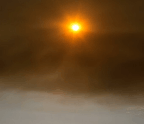Mysterious Glowing Clams Could Help Save the Planet

Snorkeling amid the tree-tangled rock islands of Ngermid Bay in the western Pacific nation of Palau, Alison Sweeney lingers at a plunging coral ledge, photographing every giant clam she sees along a 50-meter transect. In Palau, as in few other places in the world, this means she is going to be underwater for a skin-wrinkling long time.
At least the clams are making it easy for Sweeney, a biophysicist at the University of Pennsylvania. The animals plump from their shells like painted lips, shimmering in blues, purples, greens, golds, and even electric browns. The largest are a foot across and radiate from the sea floor, but most are the smallest of the giant clams, five-inch Tridacna crocea, living higher up on the reef. Their fleshy Technicolor smiles beam in all directions from the corals and rocks of Ngermid Bay.
After being cooped up in their lab at the Palau International Coral Reef Center, Sweeney and three of the scientists on her team have decided to swim out to these clam grounds, about a mile from shore. As we slice through blue-green water beside the mushroom-shaped islands, we see fruit bats sleeping upside down in the trees above us, and extensive corals below. Some of the corals are bleached from the conditions in Ngermid Bay, where naturally high temperatures and acidity mirror the expected effects of climate change on the global oceans. (Ngermid Bay is more commonly known as “Nikko Bay,” but traditional leaders and government officials are working to revive the indigenous name of Ngermid.)
Even those clams living on bleached corals are pulsing color, like wildflowers in a white-hot desert. Sweeney’s ponytail flows out behind her as she nears them with her camera. They startle back into their fluted shells. Like bashful fairytale creatures cursed with irresistible beauty, they cannot help but draw attention with their sparkly glow.
It’s the glow that drew Sweeney’s attention to giant clams, and to Palau, a tiny republic of more than 300 islands between the Philippines and Guam. Its sun-laden waters are home to seven of the world’s dozen giant-clam species, from the storied —which can weigh an estimated 550 pounds and measure over four feet across—to the elegantly fluted . Sweeney first came to the archipelago in 2009, while working on animal iridescence as a post-doctoral fellow at the University of California, iridescence is almost always associated with a visual signal—one used to attract mates or confuse predators. Giant clams’ luminosity is not such a signal. So, what is it?
You’re reading a preview, subscribe to read more.
Start your free 30 days





